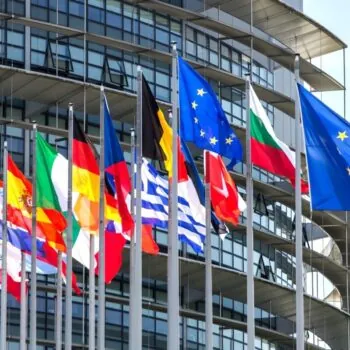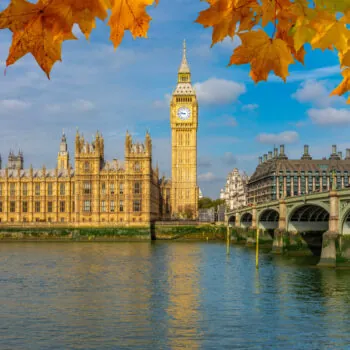There will be a lot of discussions about energy efficiency in the coming months, its potential, and what needs to be done. Here are five myths and five truths about energy efficiency that you need to know.
Five myths
MYTH: “We are doing enough already”
It is estimated that €60-100bn of annual investment is needed in buildings alone to achieve the 20% EU energy savings target by 2020. Current investments are less than half this level. Progress towards the target has been made through the Energy Efficiency Directive yet this investment gap is sizeable and without urgent action it will get far worse. The International Energy Agency (IEA) estimates that an eightfold increase in current levels of energy efficiency investment is needed across the economy to 2040 to keep the EU on track to the ‘well below 2°C’ goal.
MYTH: “We have done as much as we can”
Almost half of the EU’s cost effective energy saving potential has been ignored by only setting the 2030 target at ‘at least 27%’. By going further and faster a savings of €1tr-€2tr during 2020-2030 could be realised. In addition, there is a huge difference currently between the most and least efficient EU economies. The least efficient countries are between two and six times less efficient than the most efficient EU nations. While there are structural differences between the 28 countries, this wide variation indicates the potential to reduce the energy intensity of economies and at the same time improve their productivity.
MYTH: “It pays for itself, so there’s no need to regulate”
Energy efficiency investment generates returns as a result of energy cost savings, yet this is absolutely no guarantee that the investment will be made. Huge barriers or market failures stand in the way, such as split incentives or the disincentive caused by high upfront costs. This affects consumer choices. It might be more economically rational for a householder to invest limited savings in double glazed windows than spend it on a holiday or new car. But that does not mean the household will prioritise that investment in energy efficiency. To maximize energy savings at the speed and scale needed to combat climate change, regulation and public investment is needed to incentivise consumers.
MYTH: “It’s too hard”
Well designed energy efficiency policies can have a big impact. For example, the increased energy savings in the transport sector as of 2008, totaling at 30Mtoe by the end of 2012, can largely be attributed to the effect of fuel-efficiency standards for passenger cars. This targeted transport policy has led to reduced sector emissions as well as presenting great benefits for consumers; a car that is 25% more fuel-efficient typically saves its owner €5000 over its lifetime.
MYTH: “Pushing for more will crash the ETS”
The success of the EU Emissions Trading Scheme (ETS) will not depend on the EU’s progress on energy efficiency. Firstly, according to analysis commissioned by the German Government, more than 70% of future efficiency improvements to 2030 will come from sectors outside the ETS. Secondly, the Commission has created a Market Stability Reserve within the ETS to remove excess allowances and thus mitigate any external effect on the carbon price.
Five Truths
Truth: Energy efficiency is an affordable energy solution
Driving energy efficiency is the most cost-effective way for the EU to meet its decarbonisation and energy security goals. Creating a “level playing field” for energy investments will help achieve this most affordably. As well as reducing the amount spent on the EU’s energy consumption, this approach will reduce energy imports and avoids wasting public and private capital on financing unnecessary supply-side infrastructure. An integrated perspective looking at supply and demand together can save €11.8bn of gas infrastructure investments.
Truth: Energy efficiency can restore EU competitiveness
Europe is facing a continued growth and investment crisis. Boosting domestic investment in high value infrastructure is essential for supporting economic activity and growth. Energy efficiency is a clear growth opportunity as well as historically being one of the key competitive advantages of European industries. Energy efficiency investments generate comparable economic returns to roads and railways as well as freeing up energy capacity for other uses. A study on a programme to make British buildings more energy efficient found net economic benefits of £8.7bn (€12bn).
Truth: Energy efficiency is effective against energy poverty
54 million Europeans (nearly 11% of the European population) are not able to adequately heat their homes at an affordable cost. The most common remedies used by governments are energy subsidies and direct financial support; however these are only short-term fixes. Long-term measures aiming at improving the energy performance of the household is the most effective long term solution to ending energy poverty.
Truth: Energy efficiency can provide security at lower cost
Energy efficiency improvements have a direct impact on increasing the security of energy supply of the EU. Commission analysis shows that gas imports would be reduced by 2.6% for every additional 1% in energy savings. Implementing demand side measures in line with a 2030 efficiency target can reduce infrastructure investment needs by up to 74%. Targeted investment in demand management and demand reduction in the areas most vulnerable to energy security disruptions can further improve European resilience at lower cost.
Truth: Energy efficiency is central to delivering the Paris Agreement
The December 2015 Paris Agreement strengthened the global goal, first championed by the EU, to keep global temperature increase well below 2˚C and to pursue efforts to limit it to 1.5˚C. This goes further and faster than anything previously agreed. As Europe moves to implement the Paris Climate Agreement, the International Energy Agency estimates that two-thirds of its low carbon energy infrastructure investment to 2040 will need to be in energy efficiency.
Download the energy efficiency myth buster [PDF 495Kb]



